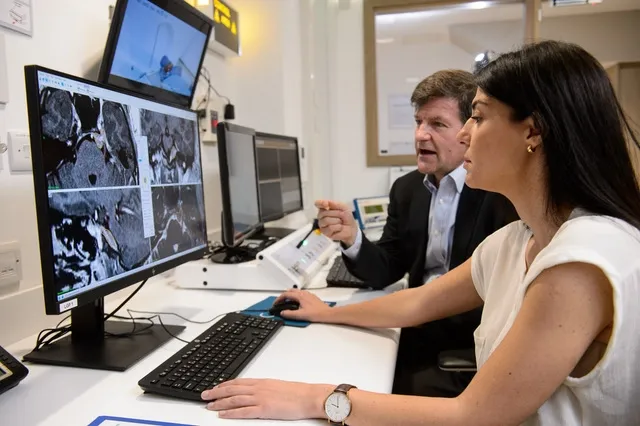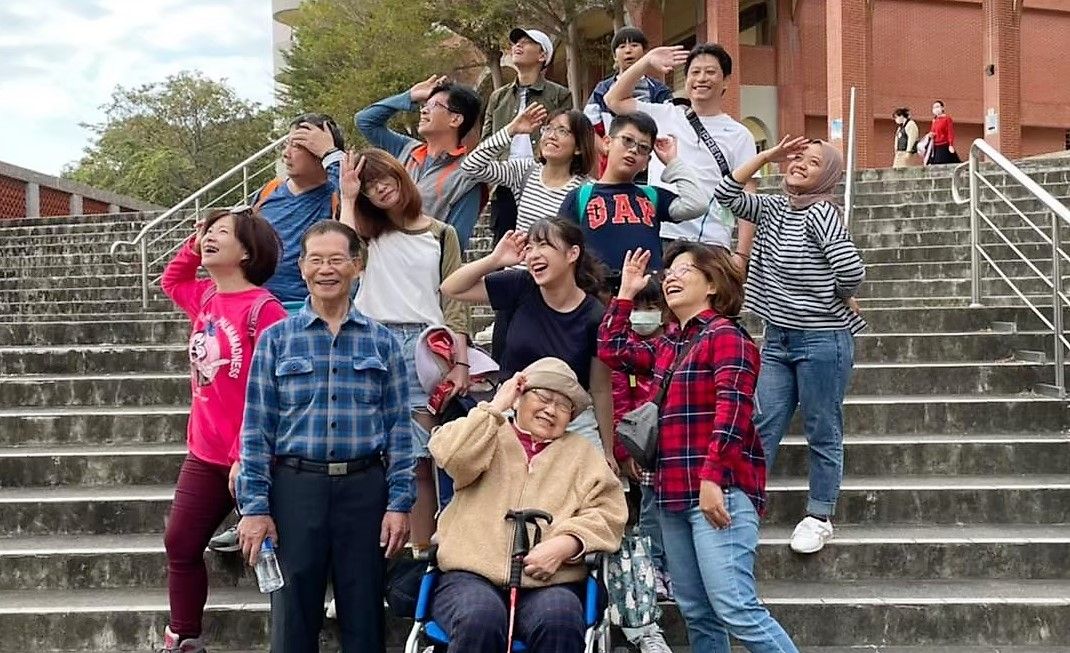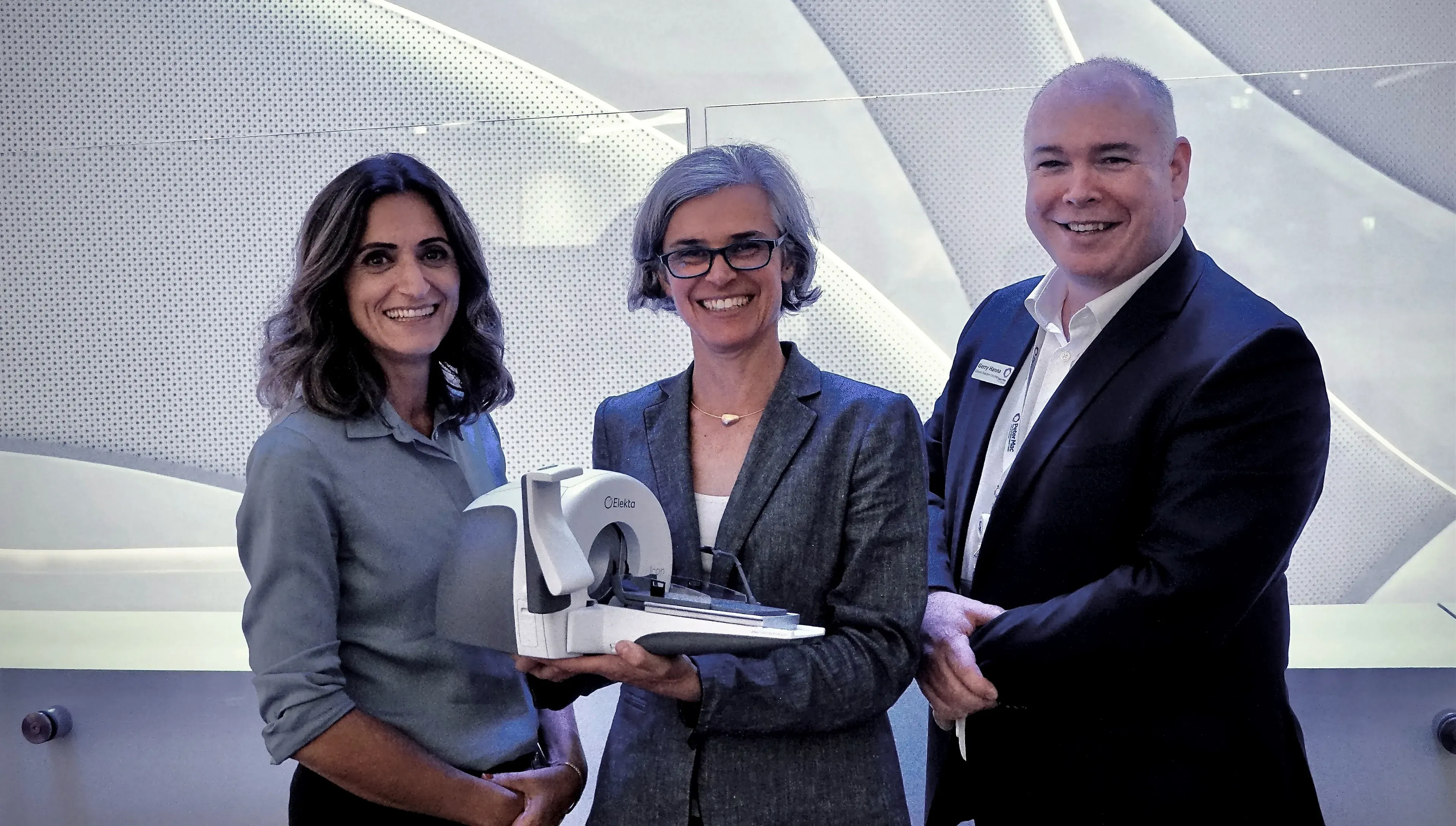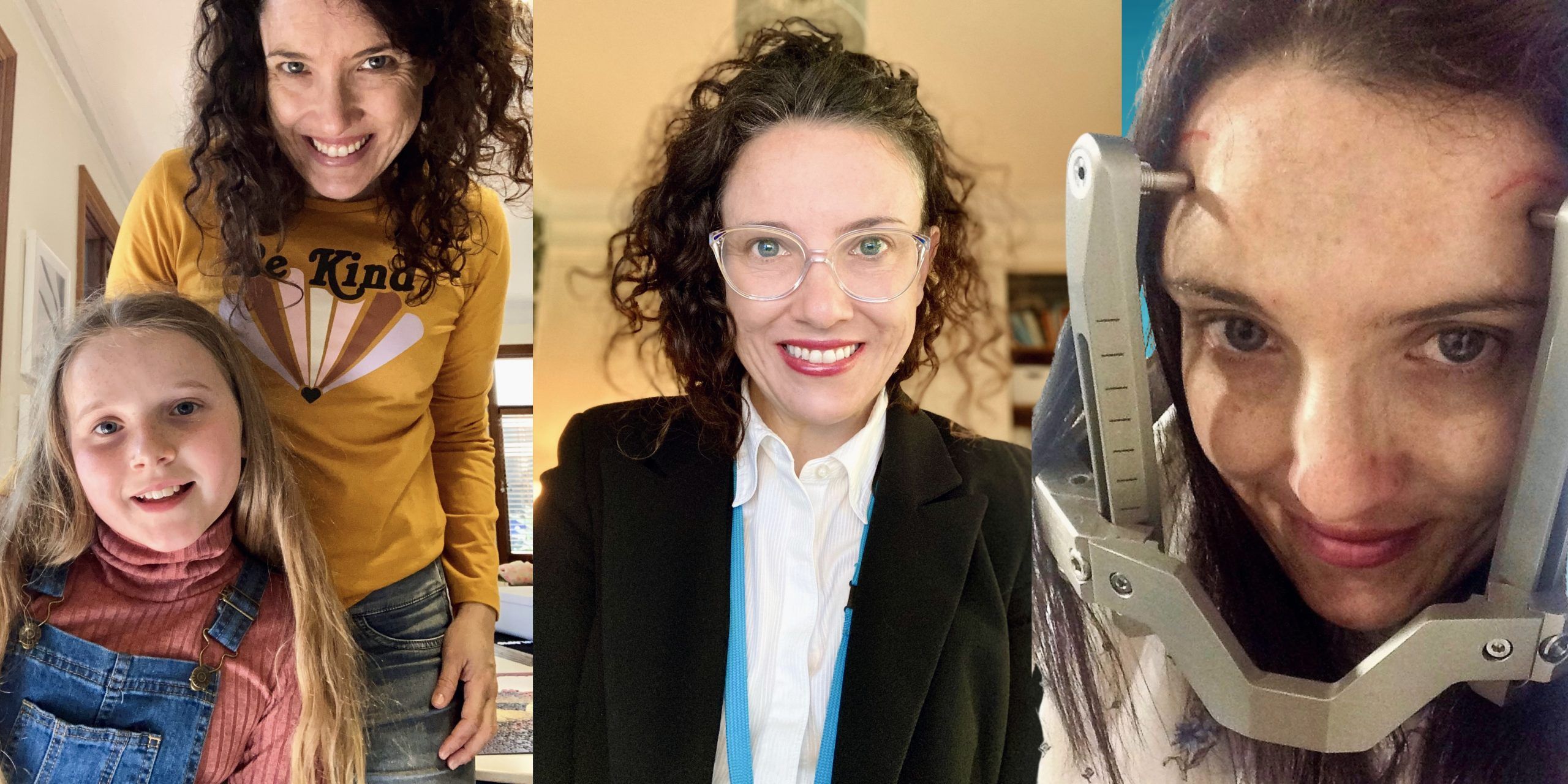Pioneering UK Gamma Knife radiosurgery clinic realizing the benefits of latest-generation system
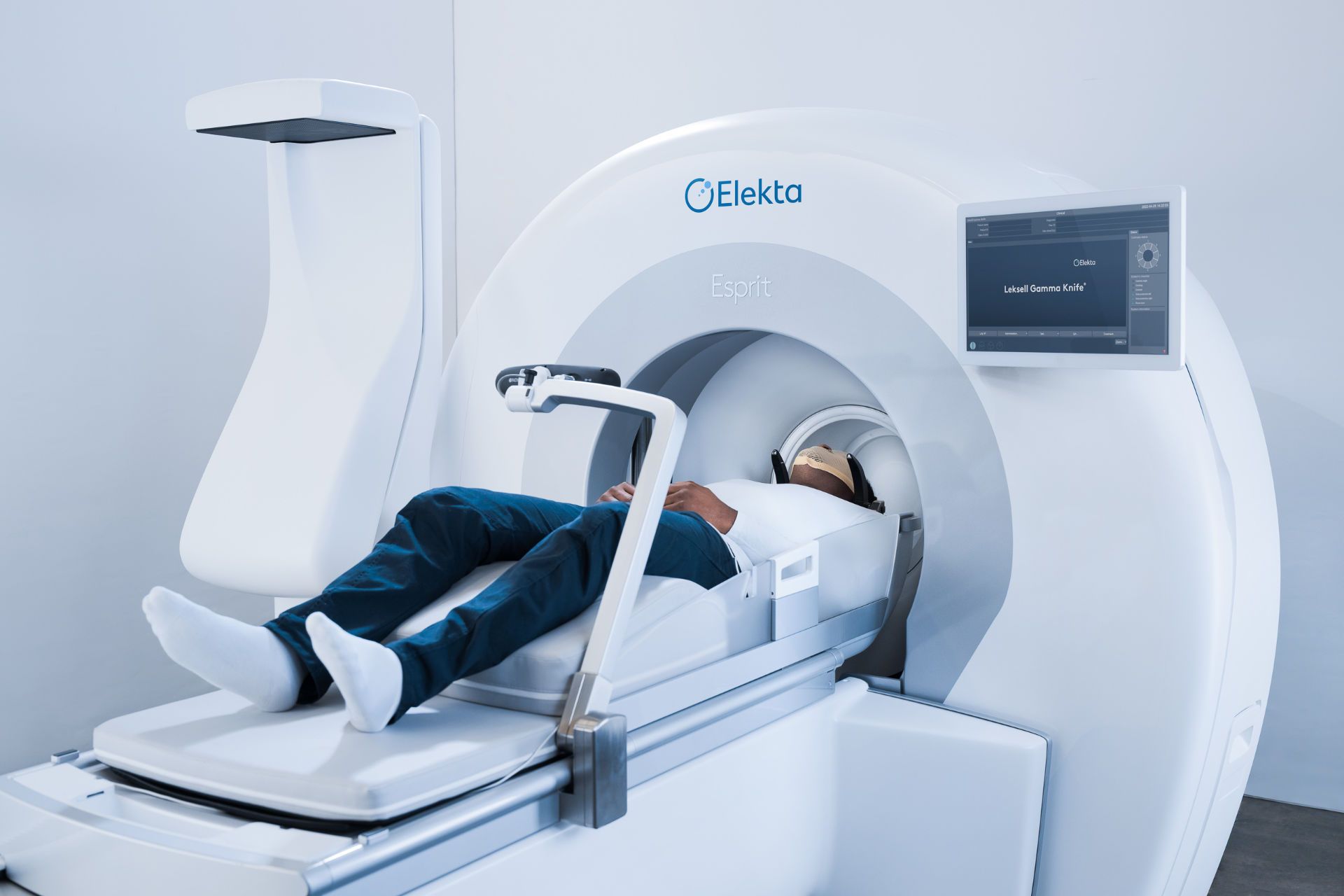
World’s first Elekta Esprit center, the National Centre for Stereotactic Radiosurgery, leverages planning and workflow improvements to elevate stereotactic radiosurgery
While the fundamental concept and physics of Gamma Knife® radiosurgery haven’t changed in nearly four decades, successive generations of the platform have introduced major hardware and software enhancements that have enabled the modality to maintain its gold standard status for treating intracranial indications. The National Centre for Stereotactic Radiosurgery (Royal Hallamshire Hospital, Sheffield, UK) is in a unique position to assess the evolution of Gamma Knife due to their status as the world’s third user of the system in 1985 and the world’s first to treat patients with Elekta Esprit, the company’s latest Leksell Gamma Knife in 2023.
“The difference today is how we deliver radiosurgery, how quickly we can deliver it and how accurate we can be.”
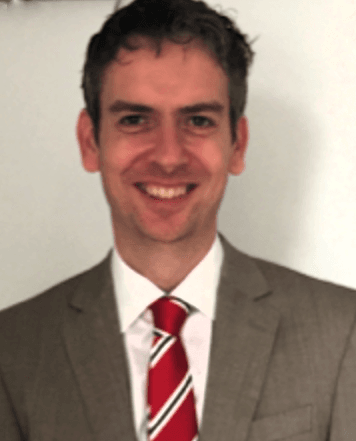
“Gamma Knife still uses the center-of-arc principle and 192 pencil beams of radiation to treat brain disorders, so the theory is the same,” says Julian Cahill, MD, Clinical Lead for Stereotactic Radiosurgery at the National Centre for Stereotactic Radiosurgery. “The difference today is how we deliver radiosurgery, how quickly we can deliver it and how accurate we can be.”
The National Centre has employed five generations of Gamma Knife technology over the last 38 years, starting with Gamma Knife S (“S” for Sheffield; predecessor of Gamma Knife U), then upgraded to Gamma Knife C in 2000, followed in 2001 by the 4C model with the Automatic Positioning System. The National Centre upgraded in 2011 to Leksell Gamma Knife® Perfexion™, a system it operated until the 2023 acquisition of Elekta Esprit.
In February, clinicians at the National Centre began using Elekta Esprit clinically. One of their first patients was a father of three who was able to resume life as usual just days after treatment for an arteriovenous malformation (AVM), which is a tangled mass of blood vessels found in the brain. A ribbon-cutting ceremony was held on March 17, during which a patient successfully treated for a meningioma in 2020 was invited to participate.
More opportunities for staged radiotherapy
The transition from Perfexion to Esprit allows the National Centre to more practically perform fractionated Gamma Knife radiosurgery, according to Dr Cahill.
“We did fractionate patients with Perfexion using the G-frame, but you can imagine how uncomfortable it would be to sleep in a G-frame for three to five days,” he says. “As time goes on, we are being asked to treat larger tumors which are deep, eloquent and surgically inaccessible. In addition, some patients are receiving adjuvant treatment which ideally you don’t want to stop while patients are recovering from surgery which can take time.
“With Esprit the ability to perform mask-based, fractionated radiosurgery is much more practical.”
With Esprit the ability to perform mask-based, fractionated radiosurgery is much more practical so the Centre is increasingly performing staged radiosurgery for larger tumors.
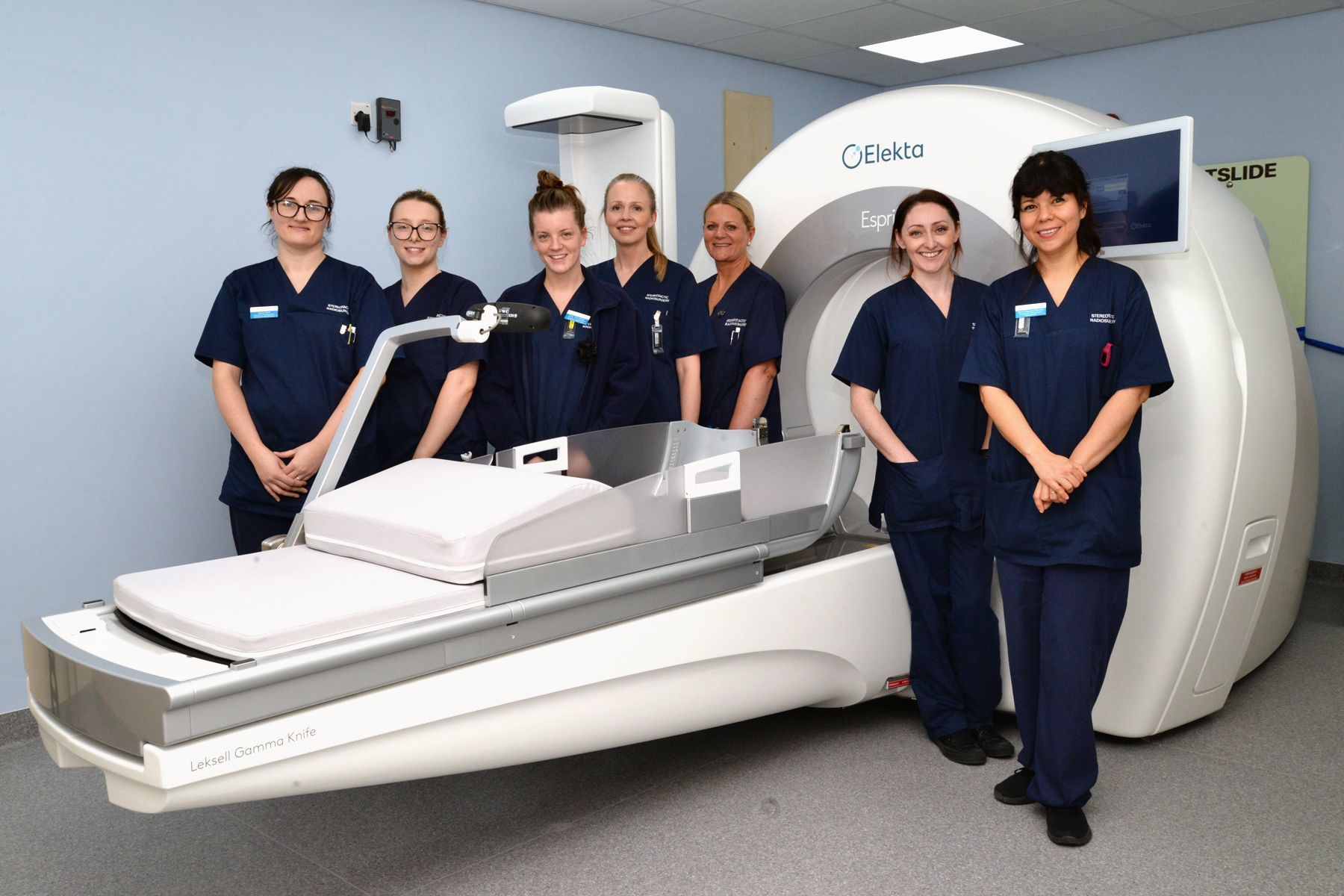
Fractionated radiosurgery also provides benefits for patients and the hospital, according to Esther Buckland, RTT, Superintendent Radiographer, Royal Hallamshire Hospital and a member of the National Centre team.
“Once patients have the mask fitted, they can go home and be with their families reducing the downtime from their normal daily activities,” she says. “While the rigid immobilization of the G-frame provides an efficient method of immobilization, we do need to keep these patients in the hospital, whereas with mask-based cases patients can remain at home between fractions and therefore also reduce the burden on the National Health Service and the hospital wards.”
Lightning planning opens door for more cases
Another significant improvement in the National Centre’s radiosurgery service has been the implementation of Leksell Gamma Knife® Lightning treatment plan optimizer. Lightning allows planners to quickly and automatically create plans for single or multiple targets, increasing automation and speed in the radiosurgery workflow, while also ensuring a personalized plan for each patient’s needs.
“For example, now when we get a referral – although your first inclination might be that the target is too close to eloquent tissues – we know we can create a preplan,” Dr Cahill observes. “We run a Lightning plan that gives us an overall treatment and quite frequently our planners will take in and out shots to optimize on treatment time, dose and margins,” he says.
In addition, the ability to take into account risk areas as part of the plan creation is excellent. For example, you can put a risk structure around the brain stem, you can plan your cerebellopontine angle meningioma and be satisfied the brain stem is not getting an excess dose.”

He recalls a recent case which provided an optimal compromise between treatment time and avoidance of eloquent cortex.
“This was an elderly lady with a lot of co-morbidities who struggled to lie flat for any prolonged period of time,” Dr Cahill says. “She had a cerebellopontine angle meningioma abutting the brain stem and was not fit enough for surgery. As she had no other treatment options available to her, I told her we could offer treatment, of course this was complicated by the fact that the treatment plan had to be quick otherwise she would be unable to tolerate it. We were able to deliver an acceptable plan within the time frame that she could tolerate.”
Improved multi-disciplinary meetings and improved design
In addition to Lightning, the National Centre’s acquisition of Elekta Esprit included Leksell GammaPlan® Remote, the Elekta technology that allows clinicians to jointly review plans over a secure Internet connection. Remote has an increasing role in the center’s multi-disciplinary team (MDT) meetings, which convene semi-weekly on a Teams call – one for metastatic disease and one for SRS indications.
The Esprit is aesthetically pleasing and quite minimalistic. It’s not an intimidating machine for patients at the National Centre’s to look at – they aren’t afraid when they walk into the room and see the machine. This is important when you consider that patients are undergoing what is for them a challenging day – anything which makes this easier for them to tolerate is very positive.
Approaching 40 years of Gamma Knife radiosurgery excellence
With a Gamma Knife radiosurgery treatment workload of 19 slots each week – translating to about 1,000 patients annually – the National Centre for Stereotactic Radiosurgery is among the most prolific Gamma Knife centers in the world. With Esprit, their clinicians have treated over 500 patients and by its 40th anniversary in 2025 will have delivered radiosurgery to well over 20,000 patients on all the Gamma Knife models it has used.
The Centre has one of the most experienced Gamma Knife teams in the world offering treatment for patients under general or local anesthesia for a range of neurological conditions. The Centre treats patients of all age groups from pediatric to the elderly and offers inpatient stays for those needing additional nursing support and the feedback on the care received has been incredibly positive across the board from patients, their families and referrers.
Learn more about stereotactic radiosurgery with Elekta Esprit.
Cutting the ribbon on the latest cutting-edge Gamma Knife
On March 17, 2023, a month after they began using their new Elekta Esprit to treat patients, the staff at the National Centre for Stereotactic Radiosurgery held a ribbon-cutting ceremony to celebrate their new Gamma Knife technology. A 54-year-old mother of three and bank former management executive, Paula, who had received Gamma Knife radiosurgery on December 1, 2020, was invited to cut the ribbon. Her story is like those of many brain tumor patients who are told that radiosurgery is their best or only option.
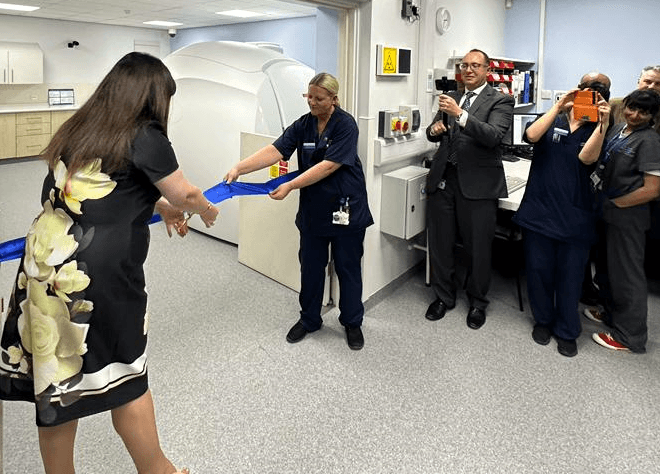
In June 2020, Paula began experiencing a persistent flutter in her cheek below her right eyelid.
“It felt like it was vibrating all the time and impeding my vision,” she recalls. “My general practitioner referred me to a neurologist who had me receive two MRI scans, which ultimately confirmed that I had a brain tumor.”
Paula was diagnosed with a right-sided petroclival meningioma 963 mm3 in size that was in precarious position abutting her brain stem.
“One of the neurologists on the case told me that if I were his wife, he would recommend Gamma Knife radiosurgery,” Paula says. “He said the tumor was inoperable, because open surgery would most likely result in paralysis or death.”
Despite the grim news that she had a brain tumor, and that surgery would likely cause brain damage, the Gamma Knife staff assured her that radiosurgery would have an 85 percent chance of halting the tumor’s growth.
Just a few months following her diagnosis, Paula received radiosurgery, a 16 Gy treatment accomplished in a single 53-minute session.
“Despite some ongoing facial nerve pain in my forehead and face that I take medication for it was a great relief to have been treated and that I’m on my journey to recovery,” she says. “The staff at the National Centre are outstanding. The care, empathy and tenacity they expressed as they looked after me, you couldn’t wish for anything better. For example, support was available from the team whenever I needed it. I was able to access advice on a daily basis during my aftercare.”
Today, nearly three years after radiosurgery, Paula reflects on the Elekta Esprit ribbon-cutting ceremony she participated in several months ago.
“I felt euphoric,” she says, “like Esprit was the start of the future – a new way of looking at things, more accurate delivery of the radiation beams, and the possibility that more people than before could benefit from radiosurgery. I felt absolutely honored to be chosen to attend, to cut the ribbon and to say a few words to let the staff know how grateful I was for their skills and efforts.”
Having to retire from her banking career for medical reasons, Paula and her husband David, are now planning to do what they love best, cruise ship voyages around the world.
LARLGK231111
